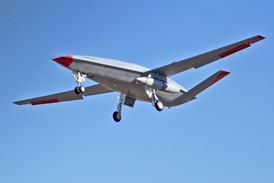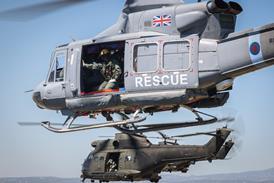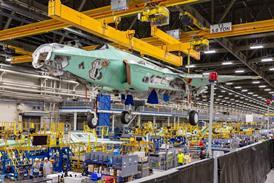Aloha Airlines is back on course after filing for US Chapter 11 bankruptcy, but the Hawaii-based carrier still faces hostile tides. Chief executive Dave Banmiller, a longtime airline doctor, talks to David Field. The deal to satisfy hold-out objectors was clinched outside a men's room downtown, but Banmiller, peripatetic fixer-upper of ailing airlines, says that now he's satisfied everyone, the delayed emergence of Aloha Airlines from its bankruptcy reorganisation is on for Friday 17 February. It was postponed from a Christmas date when last-minute protests emerged from the federal pension watchdog.
The deal to satisfy hold-out objectors was clinched outside a men's room downtown, but Banmiller, peripatetic fixer-upper of ailing airlines, says that now he's satisfied everyone, the delayed emergence of Aloha Airlines from its bankruptcy reorganisation is on for Friday 17 February. It was postponed from a Christmas date when last-minute protests emerged from the federal pension watchdog.
The Pension Benefit Guaranty Corporation (PBGC) filed several objections a few minutes before the deadline on the Friday afternoon of the last day of the objection period back in December, says Banmiller, who adds that he was in negotiations with the PBGC within hours. After the PBGC's protest over the proposed termination of several pensions schemes, Aloha had to rewrite its plan to accommodate these added costs and the rising price of fuel. The final approvals and agreements came just minutes before a final hearing in the bankruptcy court building in downtown Honolulu, with Banmiller making mobile phone calls from just outside the restrooms.
"But coming out," says Banmiller, "we'll have more equity than before and better equity/debt ratio, one of the best in the industry. We are now a 60-year-old startup company with a low-cost structure," having cut annual operating expenses by $75 million. The modified deal, worth $98 million, provides $64 million in fresh equity, $15 million in exit debt financing and a $20 million revolving loan fund. The previous reorganisation plan was worth $100 million and provided $50 million in cash and up to $50 million in debt. The new deal also includes $4.5 million more in cost savings.
Banmiller, who had earlier done workouts at Air Jamaica, Sun Country - one of the Pan Am resurrections - and other struggling carriers such as Sun Jet, was sorry he couldn't do the Aloha reorganisation within the year as targeted. He calls the delays "just sort of a bump along the way". Once the chief operating officer of Air California and then vice president-international at American after it bought out Air Cal, Banmiller is too diplomatic to point out that its island rival, the considerable larger Hawaiian Airlines, took about twice as long to do its Chapter 11 reorganisation.
The next step: intensified marketing for local business and business on the West Coast mainland markets that Aloha serves. That won't be easy: Aloha flies ETOPS-approved B737s, while Hawaiian flies B767s, and is about to add four more to its fleet of 18 in a deal that gives it some former Delta aircraft. And on the home front, Mesa Air Groups says its plans to offer low-fare inter-island regional jet service are going ahead, while locally owned Island Air just last month won regulatory approval to use larger Dash-8s on its local service.
But Banmiller found an upside when he redid the Aloha reorganisation: more hometown participation. The plan had always included the Ching and Ing families, two longstanding pillars of Hawaiian commerce that had helped found the airline in 1946 as Trans-Pacific Airlines (TPA). The January plan brings in a new group, Aloha Hawaii Investors, which includes notable investors Duane Kurisu and Colbert Matsumoto, who have also helped rescue a Honolulu radio station and newspaper. The group added $2.2 million to the total, while the chief investor, California supermarket billionaire Ron Burkle added another $10 million.
Banmiller says the hometown investment has the advantage of supporting the airline's identity as the local airline. Honolulu locals recall that in the bad old days when island society was strictly segregated along ethnic, racial and class lines, the old 'TPA' was seen as 'the people's airline'. Local lore has it that on some airlines, native Hawaiians were removed from flights to make room for a visitor or a westerner - but not on 'TPA'. Whether this is strictly accurate - and one has to hope it isn't - the hometown branding has to help in Aloha's bid to attract the large number of island expats, Hawaiians who work on the mainland but still travel home frequently. ('TPA' became Aloha in 1958).
Banmiller says that once the funding is completed and the exit formalised, "the focus will be on the employees. They have made the sacrifices and the contributions that kept Aloha alive."
Source: Airline Business
















